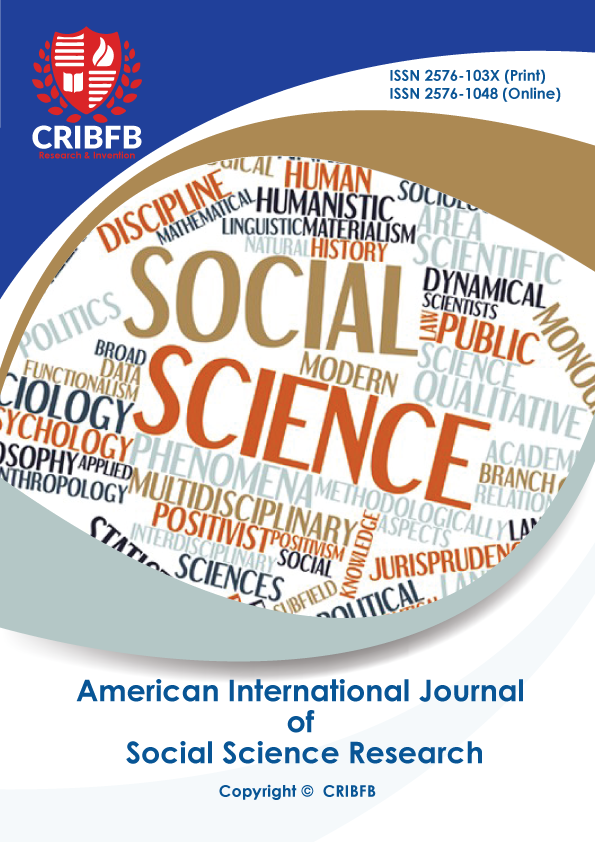MEDICATION ERROR OVERVIEW AND PREVENTION STRATEGIES
Main Article Content
Abstract
This literature review aims to highlight the overview of medication errors and strategies to avoid and decrease medication errors. Availability of various types of over-the-counter and prescribed medication has added to the risk of medication. Also, the medication chain has different steps, and different people are involved in each step, such as prescribing medication, dispensing, and administering medication. Every phase in the medication chain is prone to risks that can lead to medication errors. Medication safety is the responsibility of every healthcare professional involved in the medication chain to deliver effective and safe care to patients with an optimal outcome. A medication error can happen in every health care setting to decrease and prevent medication errors. It is critically important to have complete knowledge of the medication use chain and integrate evidence-based strategies, such as medication reconciliation, analysis of medication error, double-check, and avoiding interruption and distraction into practice. Medication errors can lead to patient harm, prevent on-time discharges, and increase care costs. Medication safety culture can shine in a setting of effectively applying strategy into practice, and everyone's collaboration and commitment to adhere to medication safety strategy can improve patient safety.
Downloads
Article Details
Issue
Section
How to Cite
References
Anderson, P., & Aspden, P. (2007). Preventing medication errors (pp. 409-46). National Acad. Press.
Bishop, M. A., Cohen, B. A., Billings, L. K., & Thomas, E. V. (2015). Reducing errors through discharge medication reconciliation by pharmacy services. American Journal of Health-System Pharmacy, 72(17_Supplement_2), S120-S126.
Bonney, W. (2013). Medical errors: moral and ethical considerations. J Hosp Adm, 32(32), 80-88.
Carayon, P., Wetterneck, T. B., Cartmill, R., Blosky, M. A., Brown, R., Hoonakker, P., Kim, R., Kukreja, S., Johnson, M., Paris, B., Wood, K., & Walker, J. M. (2021). Medication safety in two intensive care units of a community teaching hospital after electronic health record implementation: sociotechnical and human factors engineering considerations. Journal of Patient Safety.
Centers for Disease Control and Prevention. (2021). Health expenditure. https://www.cdc.gov/nchs/fastats/health-expenditures.htm
De Koning, H., Verver, J. P., van den Heuvel, J., Bisgaard, S., & Does, R. J. (2006). Lean six sigma in healthcare. Journal for Healthcare Quality, 28(2), 4-11.
Eslami, S., Abu-Hanna, A., & De Keizer, N. F. (2007). Evaluation of outpatient computerized physician medication order entry systems: a systematic review. Journal of the American Medical Informatics Association, 14(4), 400-406.
Hayes, C., Jackson, D., Davidson, P. M., & Power, T. (2015). Medication errors in hospitals: a literature review of disruptions to nursing practice during medication administration. Journal of clinical nursing, 24(21-22), 3063-3076.
Kwan, J. L., Lo, L., Sampson, M., & Shojania, K. G. (2013). Medication reconciliation during transitions of care as a patient safety strategy: a systematic review. Annals of internal medicine, 158(5_Part_2), 397-403.
Kohn, L. T. (1999). Errors in health care: a leading cause of death and injury In: Kohn LT, Corrigan JM, Donaldson MS.
Musharyanti, L., Claramita, M., Haryanti, F., & Dwiprahasto, I. (2019). Why do nursing students make medication errors? A qualitative study in Indonesia. Journal of Taibah University Medical Sciences, 14(3), 282-288.
National Coordination Council for Medication Error Reporting and Prevention. (2021). About medication errors: What is a medication error? Retrieved from https://www.nccmerp.org/about-medication-errors.
Neuss, M. N., Gilmore, T. R., Belderson, K. M., Billett, A. L., Conti-Kalchik, T., Harvey, B. E., Lefebvre, K. B., Mangu, P. B., McNiff, K., Oslen, M., Schulmeister, L., Gehr, A., & Polovich, M. (2016). 2016 updated American Society of Clinical Oncology/Oncology Nursing Society chemotherapy administration safety standards, including standards for pediatric oncology. Journal of oncology practice, 12(12), 1262-1271.
Pelletier, L. & Beaudin, C. (Eds.). (2018). Health quality solutions. National Association for Health care Quality.
Prakash, V., Koczmara, C., Savage, P., Trip, K., Stewart, J., McCurdie, T., Cafazzo, J. A., & Trbovich, P. (2014). Mitigating errors caused by interruptions during medication verification and administration: interventions in a simulated ambulatory chemotherapy setting. BMJ quality & safety, 23(11), 884-892.
Raban, M. Z., & Westbrook, J. I. (2014). Are interventions to reduce interruptions and errors during medication administration effective?: a systematic review. BMJ quality & safety, 23(5), 414-421.
Rex, J. H., Turnbull, J. E., Allen, S. J., Voorde, K. V., & Luther, K. (2000). Systematic root cause analysis of adverse drug events in a tertiary referral hospital. The Joint Commission journal on quality improvement, 26(10), 563-575.
Rivera-Rodriguez, A. J., & Karsh, B. T. (2010). Interruptions and distractions in healthcare: review and reappraisal. BMJ Quality & Safety, 19(4), 304-312.
Rose, A. J., Fischer, S. H., & Paasche-Orlow, M. K. (2017). Beyond medication reconciliation: the correct medication list. Jama, 317(20), 2057-2058.
Sarhadi, M., Abdollhyar, A., Navidian, A., Sheikh Bardsiri, H., & Sarhadi, T. (2015). The investment of effective factors on medical errors and non-reporting from nurse’s perspective. Journal of Sabzevar University of Medical Sciences, 22(1), 132-142.
Yousefi, M. S., Abed Saeedi, Z., Maleki, M., & Sarbakhsh, P. (2014). Frequency and causes of medication errors of nurses in different shift works in educational hospitals affiliated to Shahid Beheshti University of Medical Sciences. J Shahid Beheshti Sch Nurs Midwifery, 24(24), 27-34.
Zhan, C., Smith, S. R., Keyes, M. A., Hicks, R. W., Cousins, D. D., & Clancy, C. M. (2008). How useful are voluntary medication error reports? The case of warfarin-related medication errors. The Joint Commission Journal on Quality and Patient Safety, 34(1), 36-45.




